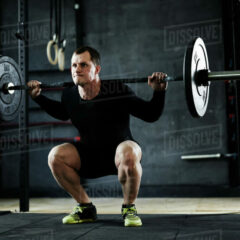Working out at home with minimal gear might seem like a tough gig at first, but it’s rooted in solid science. Minimalist workouts are all about making the most of your body weight paired with just a few pieces of equipment. This approach offers impressive benefits for your overall fitness without crowding your living room with excess gear.
Calisthenics and bodyweight training tap into your muscles’ natural ability to strengthen through repeated stress. Each push-up, squat, or plank works specific muscle groups; over time, your body adapts by building more strength and endurance. The principle of progressive overload plays a key role here; it’s about consistently upping the challenge by increasing reps, altering angles, or adding resistance. Your muscles and cardiovascular system adjust, leading to marked improvements in fitness.
One perk of minimal equipment workouts is the low barrier to consistency. With fewer excuses to skip a session, you’re more likely to stick to your routine. Consistency is essential since regular exercise encourages adaptations like enhanced muscle tone, improved metabolism, and better mental health. There’s also the convenience factor—being able to work out whenever suits your schedule makes it easier to keep going, rain or shine.
Minimalist workouts also reduce distractions and let you focus more on form and technique. This focus is crucial as it minimizes injury risk and maximizes workout benefits. Ultimately, by understanding these principles and leveraging them in your home workouts, you’re setting yourself up for sustainable fitness success.
Selecting Essential Equipment for a Home Gym
Turning your home into a fitness haven doesn’t mean breaking the bank. Having the right equipment can make all the difference when working out at home. The beauty of home workouts is in their simplicity, and a few key items can help you mimic the range of exercises you’d do at a gym without needing a ton of space.
Resistance bands, for example, are incredibly versatile. You can use resistance bands in different tension levels for various exercises, including strength training and stretching. Dumbbells and kettlebells also pack a punch, providing dynamic resistance that can challenge multiple muscle groups. Start with weights that suit your current fitness level and gradually build up as you gain strength.
Investing in minimal equipment provides more than just physical benefits. It also provides a psychological boost. Dedicated gear can significantly enhance motivation and commitment to your routine. These items signal to your mind that it’s workout time, helping to create a clear distinction between exercise and relaxation spaces at home.
Looking for gear doesn’t have to drain your wallet. Second-hand stores, online marketplaces, or even looking for sales on new equipment can offer budget-friendly options. And if you’re creative, everyday items like water bottles or backpacks filled with books can stand in for fancy equipment. Ultimately, the goal is to build a toolkit that supports your fitness journey, whatever shape that may take.
Structuring Your Workout Routine
Crafting an effective home workout routine requires some planning but pays off big time. Begin by identifying your fitness goals, whether they involve building strength, boosting endurance, or increasing flexibility. These goals will shape your exercise selection and determine how often you engage in them, ensuring that your efforts are effective and aligned with your fitness journey.
Balance is key. To obtain the best outcomes, it’s crucial to integrate a range of exercises that target various muscle groups. Consider dividing your routine into push (like push-ups), pull (such as rows with resistance bands), and core exercises (think planks or sit-ups). It ensures a comprehensive workout that engages multiple areas of your body.
Recovery days are equally essential as days spent exercising. Your body requires time to recover and gain strength, so plan to take at least one or two rest days each week. This downtime doesn’t mean complete inactivity; gentle stretching or light yoga can maintain flexibility without straining tired muscles.
Align your routine with your daily schedule. Consistency trumps intensity, and finding the right time of day to work out increases your chances of sticking to your plan. Consider shorter, more frequent sessions if that fits better into your day. Tailoring your exercise regimen to suit your lifestyle and fitness objectives will increase your chances of seeing progress without burning out.
Motivation and Mindset: Staying Committed to Your Routine
Getting into a groove with home workouts requires mental stamina and a few tricks. First, setting realistic, achievable goals is crucial. Whether you’re aiming to hold a plank for an extra minute or add another set to your squats, marking these small victories can keep motivation high.
Progress tracking can be your best friend here. Seeing tangible improvements, like increased reps or better form, reinforces your commitment and helps set new targets. This visible progress often fuels a positive cycle of motivation.
Of course, challenges pop up, from simply not feeling like exercising to more serious lulls in enthusiasm. On those days, remind yourself of the benefits you’re working towards, like better health and a boosted mood. Mix your routine with new exercises or try a workout playlist to reignite your drive.
Creating a dedicated workout space at home can help establish a routine. A favorite corner isn’t merely functional but serves as a reminder and inspiration to keep at it. Plus, staying connected with a community through online groups or fitness apps helps you share achievements and find accountability buddies. There’s strength in numbers, even if they’re virtual.
